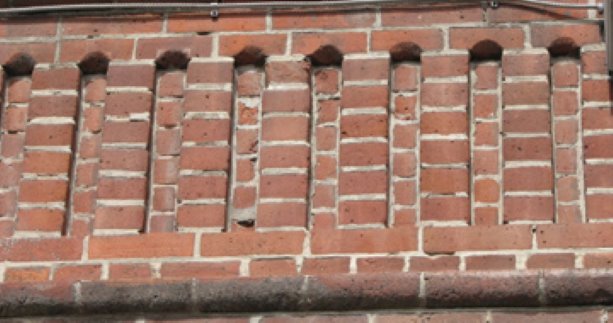Everest Restoration Ltd. is working on a brick replacement job at the 144-year-old Grace United Church in Brampton, Ontario. The challenge for the construction project was redoing the wall without compromising the structural integrity of the church.
Finding replacement bricks in the 21st century for a 19th century building can be difficult. Most modern bricks don’t look like Victorian bricks and because they are formulated to different strengths, they often don’t behave like old softer bricks do in a wall.
The owners of Victorian Grace United Church in Brampton, Ont. however, had an even bigger concern about what to do with the 144-year-old church when an engineer’s report concluded that 90 percent of the outer layer of the church’s original brickwork had lost most of its strength.
The church didn’t just need a few replacement bricks — it needed a whole wall of them.
“We needed 30,000 similar-sized bricks so the coursing of the brick and joint size would be the same as the original and match up with the inner brick wall,” explains Mike Macklam, co-owner of Everest Restoration Ltd., the masonry contractor for the heritage church’s recently completed restoration.
What turned out to be a compatible replacement was a soft moulded brick 8.5 inches long by 2-and-3/8- inches-high made in England by Ibstock Brick Limited, a company in business for more than a century in Leicestershire, Eng.
Ibstock Heritage Red Blend Brick was purchased through local masonry supplier Kreitmaker Inc. President Peter Natakos says the English brick, which looks similar to commonly used bricks in Toronto’s 19th century, is a good match for many older Toronto homes and commercial buildings.
“A lot of smaller manufacturers in Toronto back in the day made these kinds of bricks, but it eventually became uneconomical to manufacture them,” says Natakos.
Replacing an entire wall of bricks on a historic church is not common. The challenge for Everest Restoration was redoing the wall without compromising the structural integrity of the church. The solution was to simply remove sections of the brick wall in a planned sequence to eliminate the need for structural shoring of the building.
Macklam says much of the old brick was beyond repair because of inappropriate repairs done in the past with modern high-strength mortars that contributed to cracking of the original masonry.
Everest pointed the new bricks using a hydraulic lime mortar called HLM-500 Mortar — “a true historic mix.”
While most of the original arches (known as voussoirs) on the old Brampton church were retained, replacing damaged tapered masonry units in the arches was done on site with custom cut stone by Historical Restoration Masons.
In addition to the masonry work, Everest also rebuilt dormers using six- by six-foot Douglas Fir. “All the millwork, including soffits and fascia, were replaced. We had to make special tools to cut the cove molding for the trim work so it was the same as the originals,” says Macklam, adding that job also entailed installation of historical plaster and leaded copper flashings.
Budgeting for restoration jobs like the church can be difficult. Everest simplified it, by breaking down the time (and material costs) for each portion of the job.
“Twenty-five years of experience with restoration projects was also on our side,” says Macklam.
The 10-month project was completed over a two-year span late in 2010. Funding for the restoration was obtained through an Ontario Trillium Foundation grant.
Many 19th century masonry and stone buildings are ripe for repair today and not only because of badly done modern repairs and renovations.
Mortar mixes of that era weren’t always as “accurate” or compatible for the masonry as they needed to be.
“A lot of the collar joints between the bricks are shot because the mortars didn’t go off as they should have. They are ready to be redone now.”











Recent Comments
comments for this post are closed